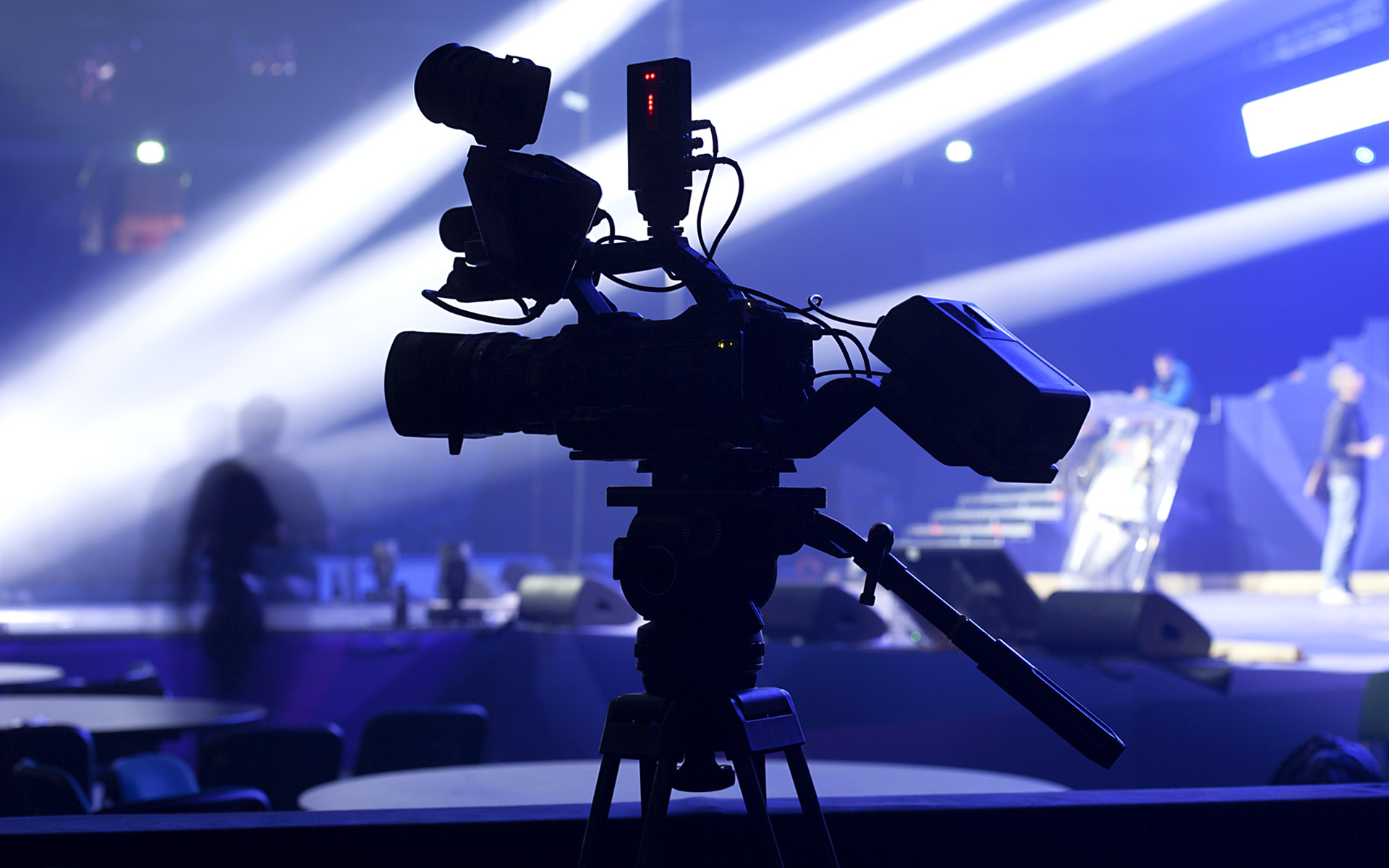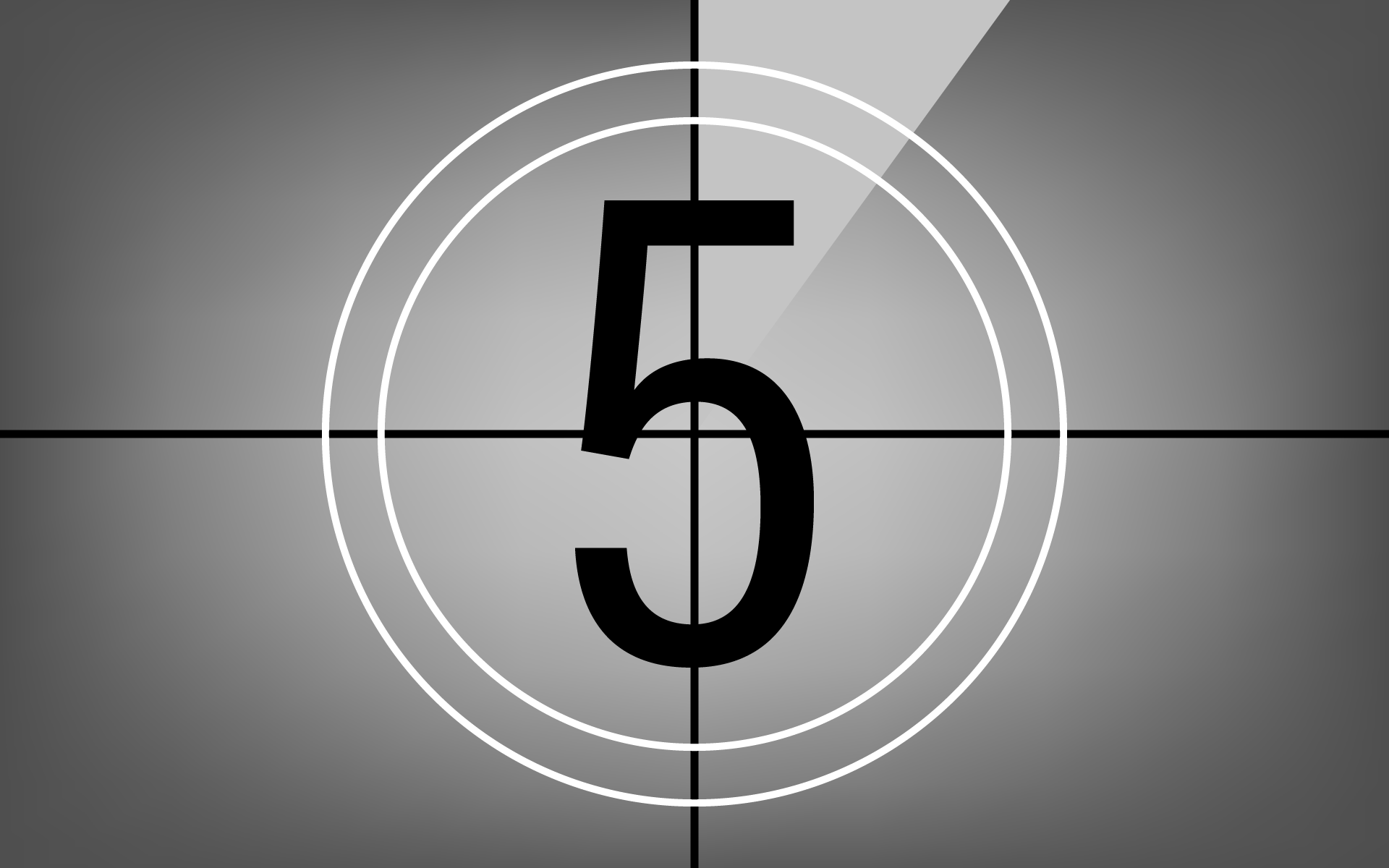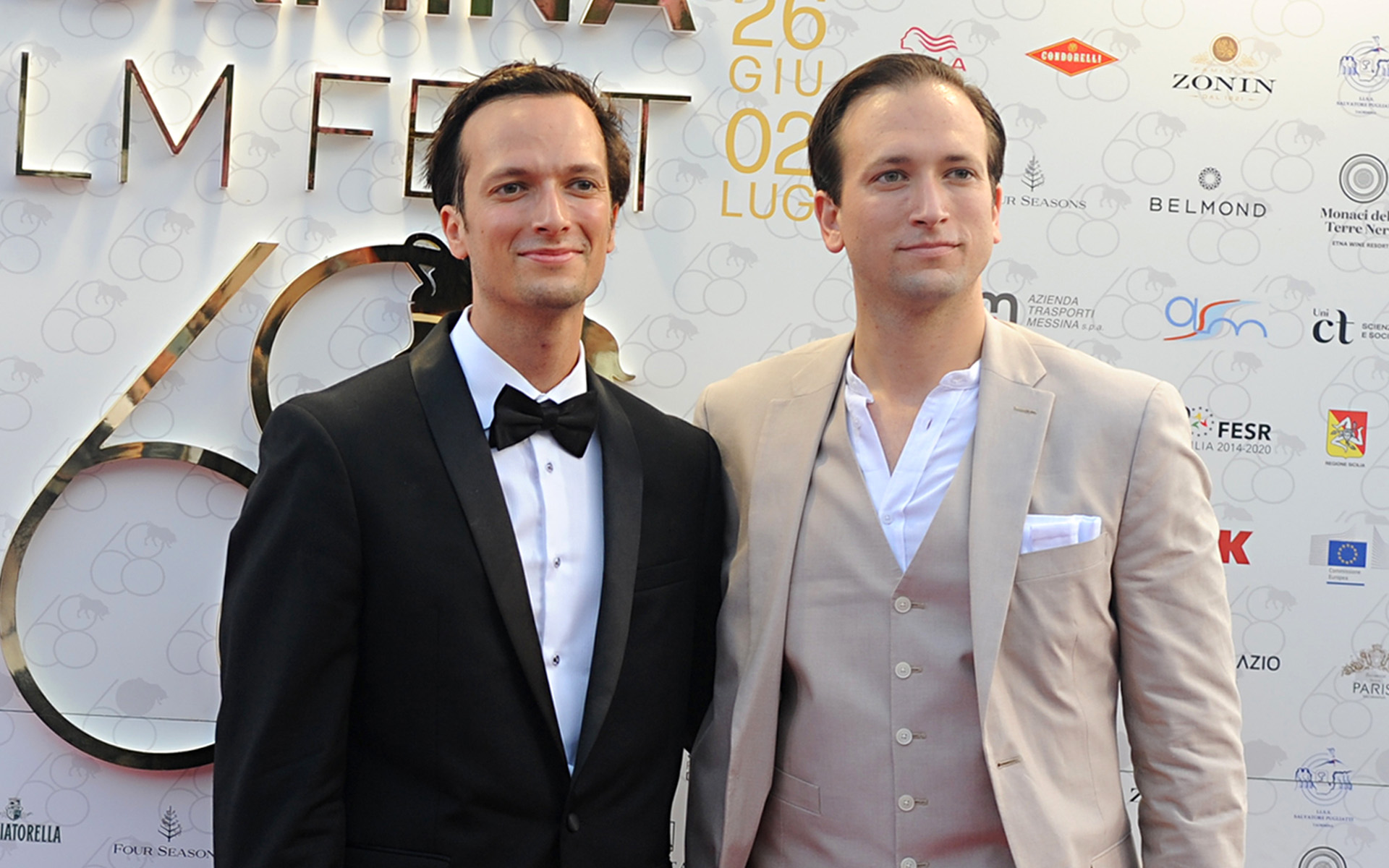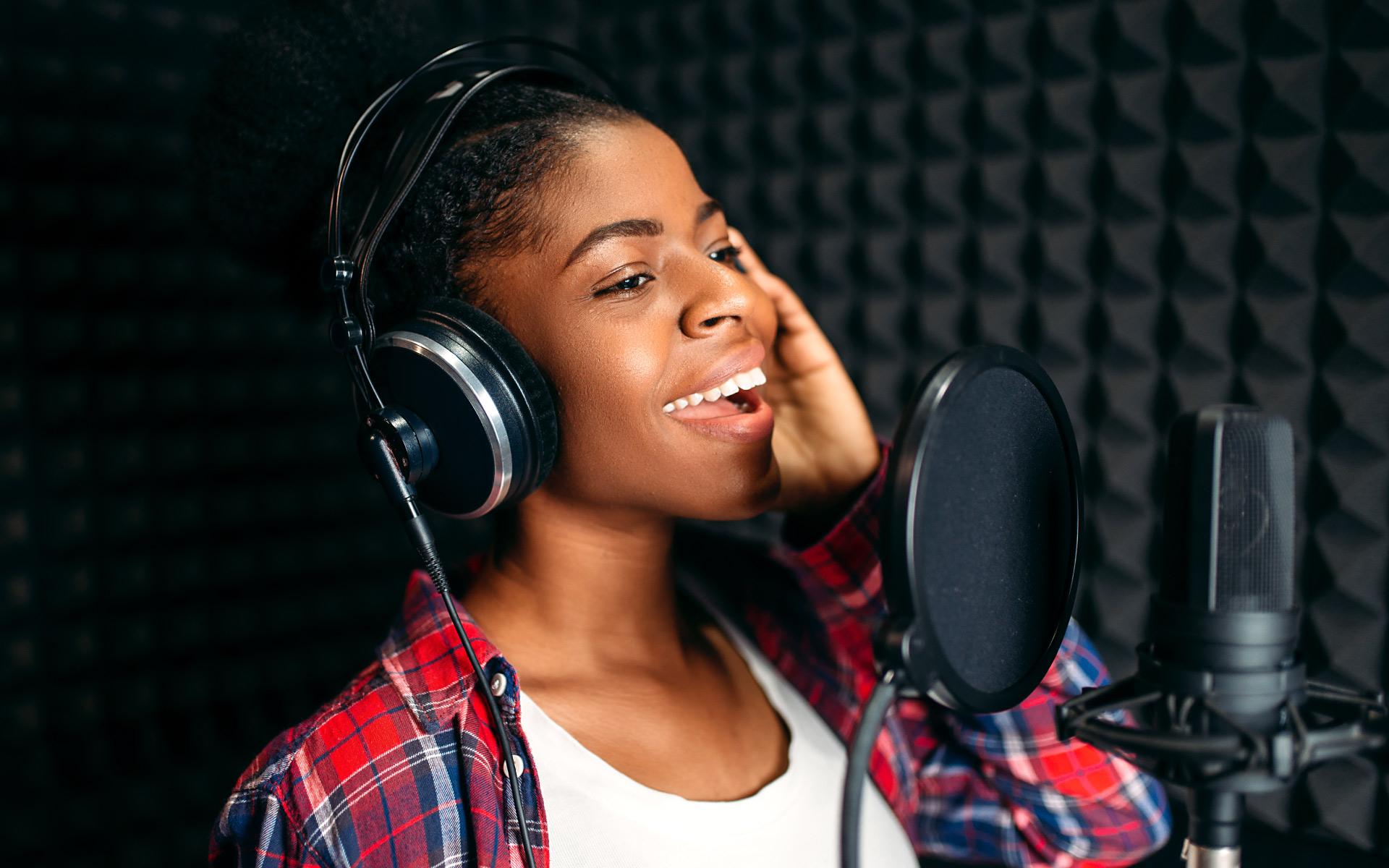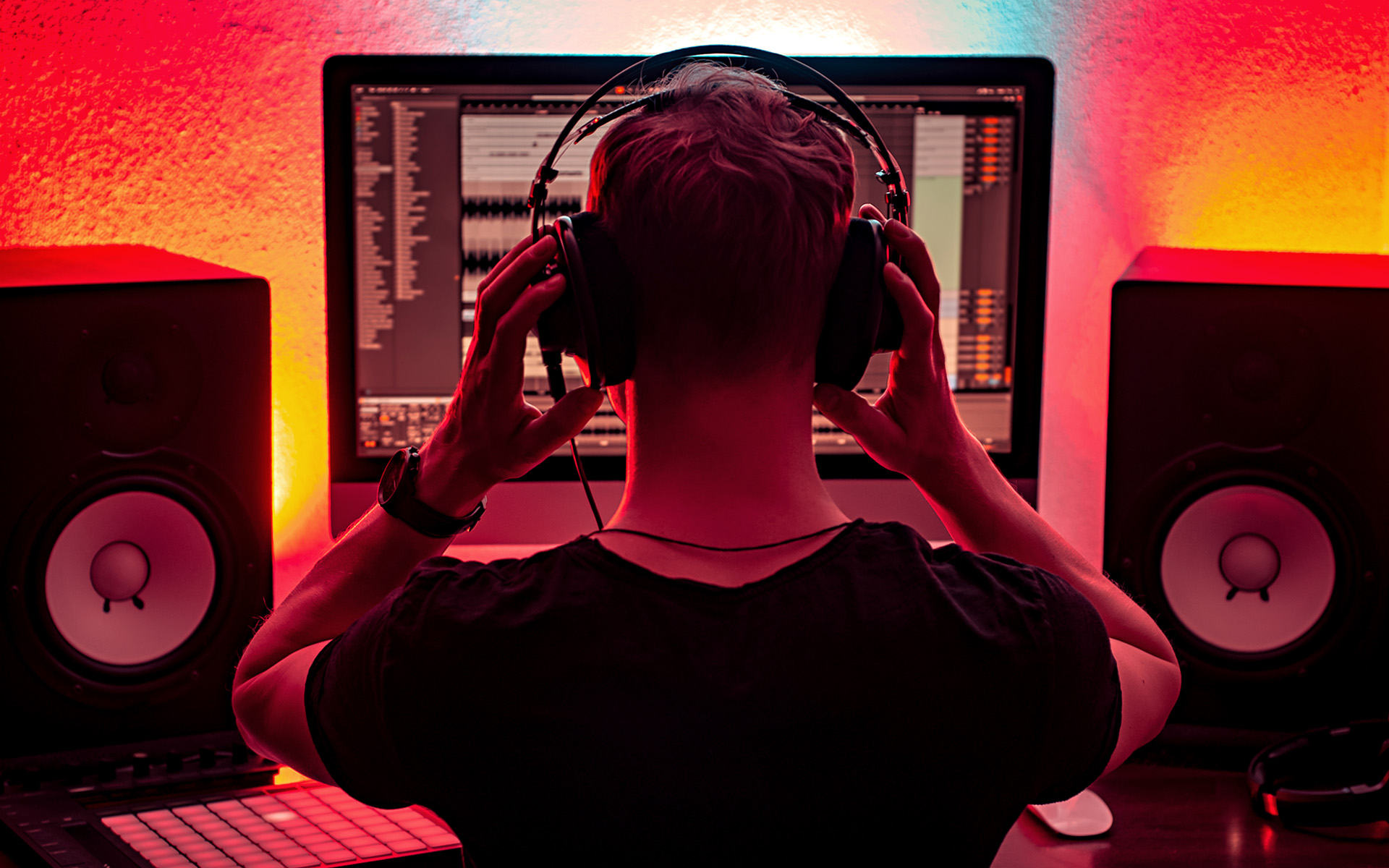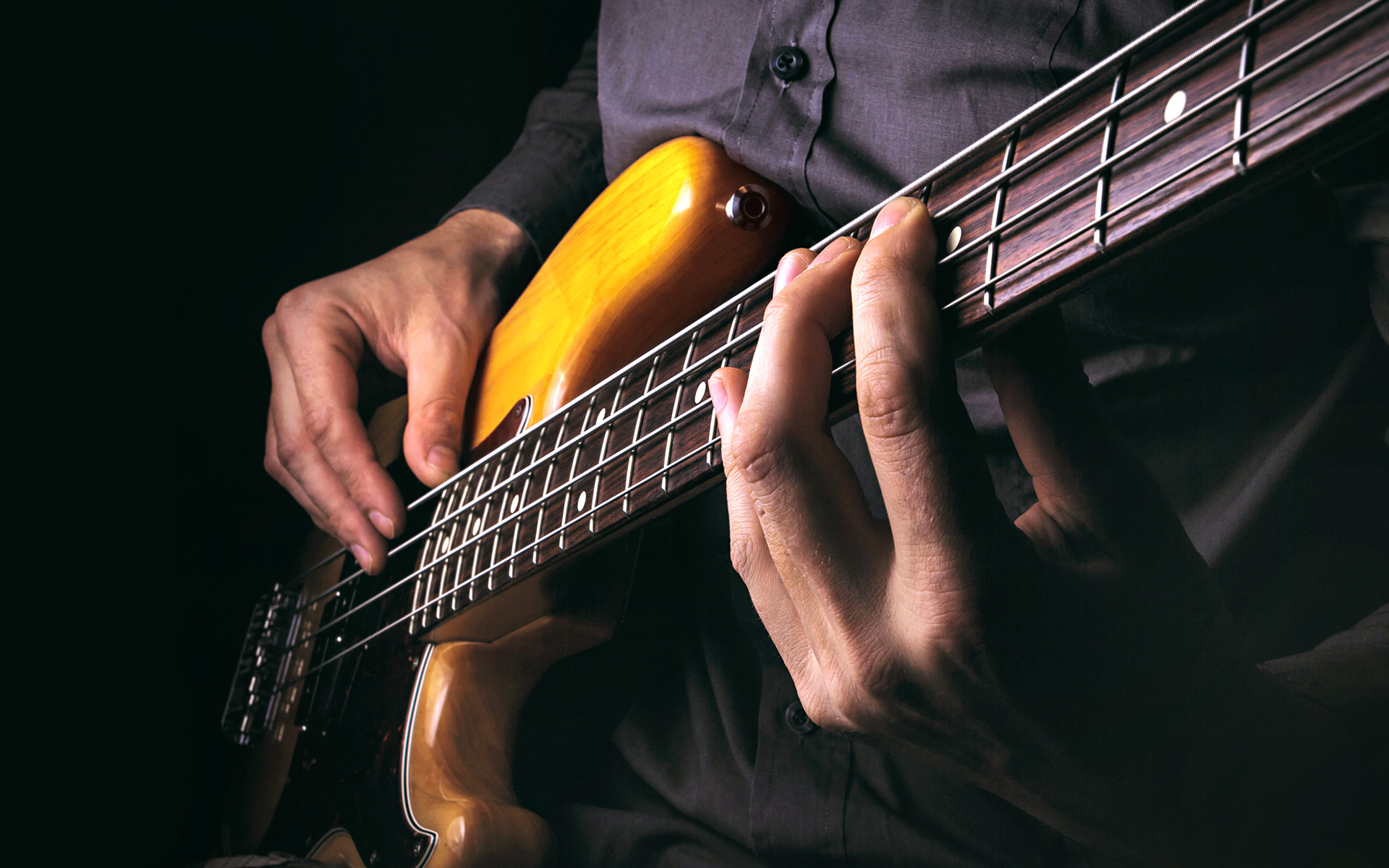The following information on cinematography and filming musical performances and music videos is excerpted from the Berklee Online course Digital Cinematography Fundamentals, written by Tal Lazar, and currently enrolling.
In the realm of live concerts, music videos, and film, every detail is meticulously crafted to captivate audiences. From strategic camera placements to the art of storytelling, the goal of cinematography is always to maximize the interplay of sound and visuals. Let’s get into live concerts first.
Live Concert Video
Any time you’re filming non-narrative events such as a live concert, you should plan the cinematography meticulously. Stage design elements need to be placed between songs, lighting cues and wardrobe changes all depend on knowing the plan ahead of time. The bigger the concert, the more organized and controlled the event needs to be.
The planning of filming of a live concert begins with the setlist. If you’re going to be working with an artist who is currently on tour, you should check out the show before filming it. And before checking out the show, you should check in with the artist’s team and have them share a general setlist. Of course there may be some variations and surprises, but it will be helpful to have a general plot of songs to expect. To gather some historical data from the artist, check out setlist.fm, a fan-based hub for cataloging what songs certain artists played on any given night.
So once you’ve seen the setlist, it is now up to you—the filmmaker—to build a plan based on the songs. Live concerts are normally shot using several cameras. The setlist will reveal where the cameras should be placed and when they should be aimed at certain places. For example, a camera can anticipate the crowd’s reaction to a very popular song.
Only proper preparation can result in a professional concert shoot such as this one:
The video is from U2’s 2011 performance at Glastonbury. If you look at the setlist, and compare it to other setlists for the tour, you’ll notice that although there are slight alterations from night to night—U2 has always been a band to embrace the spontaneity of a moment—for the most part the setlist moves in a way that won’t throw off the film crew or the lighting crew or any of the hundreds of people working on the tour.
The same methods of preparation apply to all concerts being filmed. For example, in this piece—taken from a concert of the Berlin Philharmonic Orchestra, conducted by Simon Rattle playing Carmina Burana by Carl Orff—notice the many camera angles which anticipate key moments in the score:
You need only watch the first few seconds to see how diligently the cameras mirror the most prevalent sounds in the score as well as the expressive motions of Simon Rattle. When you hear the timpani, you see the timpani. When you hear the cymbals, you see a musician forcefully crashing them together. And when the score calls for a rest, you see all of the musicians in the orchestra together, awaiting their cure from Rattle.
Music Videos
A music video is somewhere between a narrative film and a music event. While there is no spoken dialogue, there are actors and scenes, much like narrative film. Some music videos have live concert elements in them, while others are more narrative in nature.
If you are planning to shoot a music video, creating a plan will help you accomplish your goals. If the music video contains narrative elements, consider writing a script for these scenes. Narrative music videos can be very simple, for example:
“Look What You Made Me Do” by Taylor Swift
What could be a better example of narrative storytelling than Taylor Swift taking back her own narrative? Check out the cinematography in the “Look What You Made Me Do” music video! When planning to produce a music video, you must answer the same story questions we have discussed so far. And here’s how it shakes out for this Taylor Swift video:
- The story of the music video is: Taylor is reclaiming her public image, and ushering in a new era where she will not tolerate entertainment industry bullies.
- The plot is: Taylor rises from her grave, hinting at the hiatus she took from music from 2016-2017. She then appears sitting on a throne surrounded by snakes, a callback to a feud between her, Ye, and Kim Kardashian, that resulted in millions of Twitter users calling her a snake. She is then depicted causing chaos by crashing a car, robbing a bank called “Stream Co.” (a possible jab at Spotify, a service from which she removed her music for many years), and chainsawing a wing off a plane, among other visualizations of her power and authority. The height of the video includes her standing atop of a mountain of Taylor clones from her previous eras. She picks up a phone and says the iconic line, “The old Taylor can’t come to the phone right now. Why? Oh, because she’s dead.” The video concludes with the Taylor clones verbally fighting with one another.
- The protagonist is: Taylor Swift.
- The conflict is: Internal and external. It’s internal as she copes with distrust towards others, and external as she sends a message of her resilience and self-awareness.
Knowing the answers to these questions will eventually translate into the location, props and actors needed to tell the story.
The Script
Every event we film with a camera must be planned in advance. Narrative films use a screenplay as a base for planning the production. Other movies, such as live event coverage use other methods of planning. Even documentary films use some form of planning to predict the necessary scenes and interviews needed for the final film.
This form of planning is called the script, and it is the first and most important step in cinematography for a movie of any kind. As a visual artist, the script contains valuable information on what type of images are needed for this specific story. In narrative films, screenplays are written with images in mind, making the task of reading a very visual experience. But what is the process of turning words into images?
Read ‘The Visitor’
Read the following short script, The Visitor, by Nadine Truong. Every story can be told in so many different ways, but ultimately only one way is chosen for the vision. Think about how you would approach turning this story into images. What kind of cinematography do you imagine?
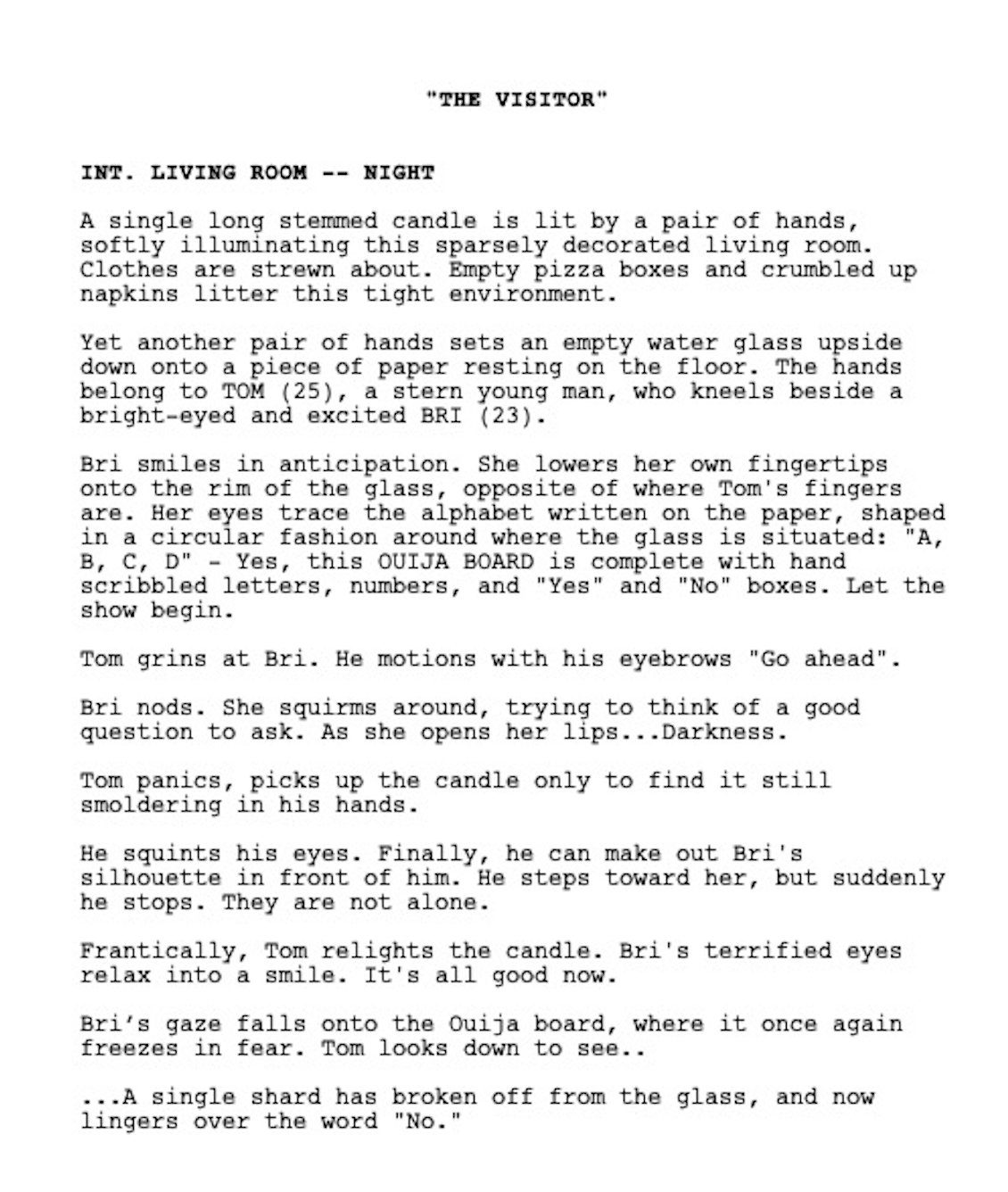
Do you see images while reading it? What are they and how would you make sure that the images you come up with in fact tell the story?
As a cinematographer you will be in charge of the visual aspect of a movie. This means that the director will be the one working with actors and coordinating between the different film departments (wardrobe, production design, sound, etc). In such a situation you will most likely be handed a screenplay that has been written by someone else and asked to help translate the words into images. Even if you secretly want to be a director, and end up writing your own screenplay, you will have to go through a process of creating images from your own words. This process starts with script breakdown.
When we approach a new screenplay (even if we wrote it), we must first ask a series of important questions:
- What is the story?
- What is the plot?
- Whose story is it?
- Where and when does the story take place?
The answers to these questions can be in the screenplay, but they can also be changed.
Let’s think about the script we just read, The Visitor. This story can be told from different points of view. A director might decide that the story is Tom’s story and be told from his perspective. Alternately, a director might interpret the scene differently and tell a story of a ghost observing the couple. The answer to the four questions above is a result of a combination of what is written in a screenplay, and working with a director who interprets the cinematography of the story in their way.
Think about famous directors you know—Stephen Spielberg (Jaws, Indiana Jones), the Cohen brothers (The Big Lebowski, No Country for Old Men), Greta Gerwig (Lady Bird, Little Women), how different each director’s interpretation of the same story would be!
As an experiment, read The Visitor once again and think about if you received this as a script for a music video. Write down the answers to the four questions:
- What is the story?
- What is the plot?
- Whose story is it?
- Where and when does the story take place?
Some information to answer these questions is absent from the script. Your answers would also probably depend on the song that is going to accompany these visuals in the music video.
Analysis
Since you are working alone and without a director, you will be your own director. You will have to make decisions when answering the questions, based on your own personal taste and interest. For example, is it Tom’s story? Is it Bri’s story as she overcomes her fear to perform a seance? Is it the beginning of a love story between Tom and Bri? Try to stay loyal to the written words and the story of the writer, while combining your own view of the world when answering the questions.
Once we have answers to the basic story questions we should have a better idea of how to approach the story’s cinematography. As filmmakers, we must have a deep understanding of the story and the motivations behind the characters. For example, to create a feeling of terror, a cinematographer would have to know everything there is to know about the character of a killer in a movie—much more than the information given to the audience!
When we have this information, it is time to start coming up with ideas for images. But how do we do this? There is an infinite amount of possibilities when it comes to images.
For the opening of The Visitor, should we begin with an extreme close-up on the water glass with a finger on it, or perhaps with a wide long shot of the couple sitting in the empty room? Both options are valid, and it depends on our preference on how we want the audience to feel when watching the movie.
Visual Guidelines
The secret to getting yourself inspired to create images is … to use other images!
If we could immerse ourselves with images that are relevant to the story we want to tell, we will quickly find the things that we like or don’t like. But how can one find those images that are relevant specifically to the story that we have? By using visual guidelines for our cinematography.
Visual guidelines are words that connect to the essence of the story we want to tell visually. For example:
Let’s imagine that the following decisions were made by the director:
- The story is Tom’s story, as he falls in love with Bri. They share an experience which will bring them closer together.
- The plot is: Tom and Bri are home alone. To overcome the awkwardness of the situation, the two decide to perform a seance. As the ritual brings them physically closer to each other, they are surprised that it actually works and a spirit decisively objects to the connection between them.
Now is the time to find the visual guidelines for the story. Remember, we are looking for words which describe the situation and the essence of the story. For this interpretation of the story, visual guidelines could be:
Love, Alone, Awkward, Seance, Closer, Surprise, Spirit
It’s important to remember that we are now interpreting a story. Every person will go through this process differently and come up with different images. The visual guidelines you find will lead you on a completely different and unique path. There is no right or wrong!
Visual References
Once you have found your visual guidelines, it is time to find the visual references. These are images we will use for inspiration and ideas which will help us create our own images. This can be done in several simple ways:
- Use Google to search for images using the visual guidelines.
- Think about the visual guidelines and try to see what images come to your mind.
- Use books and magazines and find images that connect, in your mind, with the visual guidelines.
Once you create a collection of visual references, look at each image and ask yourself:
- What do I like about this image?
- Why does it connect with my story?
In Google, search for “Seance” and “Alone,” candle-lit images came up, such as this one:
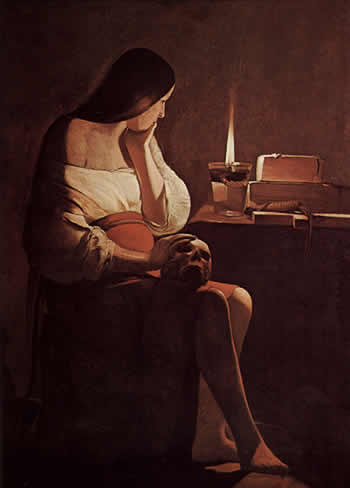
This image actually has nothing to do with Seance. It is a painting entitled Mary Magdalene with a Night Light, a religious scene and the artist—Georges de la Tour—is well known for painting religious themed paintings.
However, it does connect with the story in both the candle light and the atmosphere that one can recreate in the room of The Visitor. This image, and many others, can become a visual reference for the type of mood and lighting that is appropriate when creating images for The Visitor.
Most films use visual references when designing the images for the movie.
Example: ‘Inception’
When working on the film Inception, director Christopher Nolan set out to reference the nature of dreams, so he used several works by painter M.C. Escher, such as Drawing Hands (1948), Relativity (1953), and Ascending and Descending (1960).
Watch the following scene from that film, and then an interview with the filmmakers describing the thought process and execution of this specific scene.
Even if you have no intention of being a writer or director, understanding the story will help you create meaningful images for your cinematography. This goes for feature films, music videos, and even live concerts. The story is the heart of every motion picture.
Big Picture: The Story
What’s important to remember in all of this is the big picture, no pun intended, and that’s the story. That said, the small details that make up the big picture are also important, especially when it comes to the world of live concerts and music videos. Cinematography is a tapestry of meticulous planning, creative vision, and technical expertise. From the strategic placement of cameras to the seamless integration of sound and visuals, these artistic endeavors transcend the boundaries of mere performance. They can become immersive experiences that stir emotions and leave indelible memories. Think about some of your favorite songs: the actual image that comes into your mind is probably from the music video.
Whether you find yourself swept away by the electrifying energy of a live concert, or drawn into the narrative depths of a music video or film, one thing is certain: the power of music combined with cinematography has the remarkable ability to transport us to extraordinary realms.





